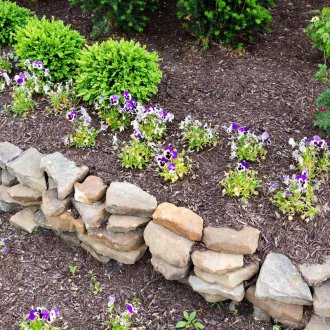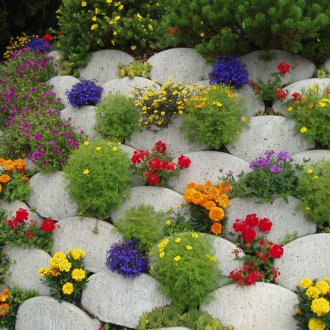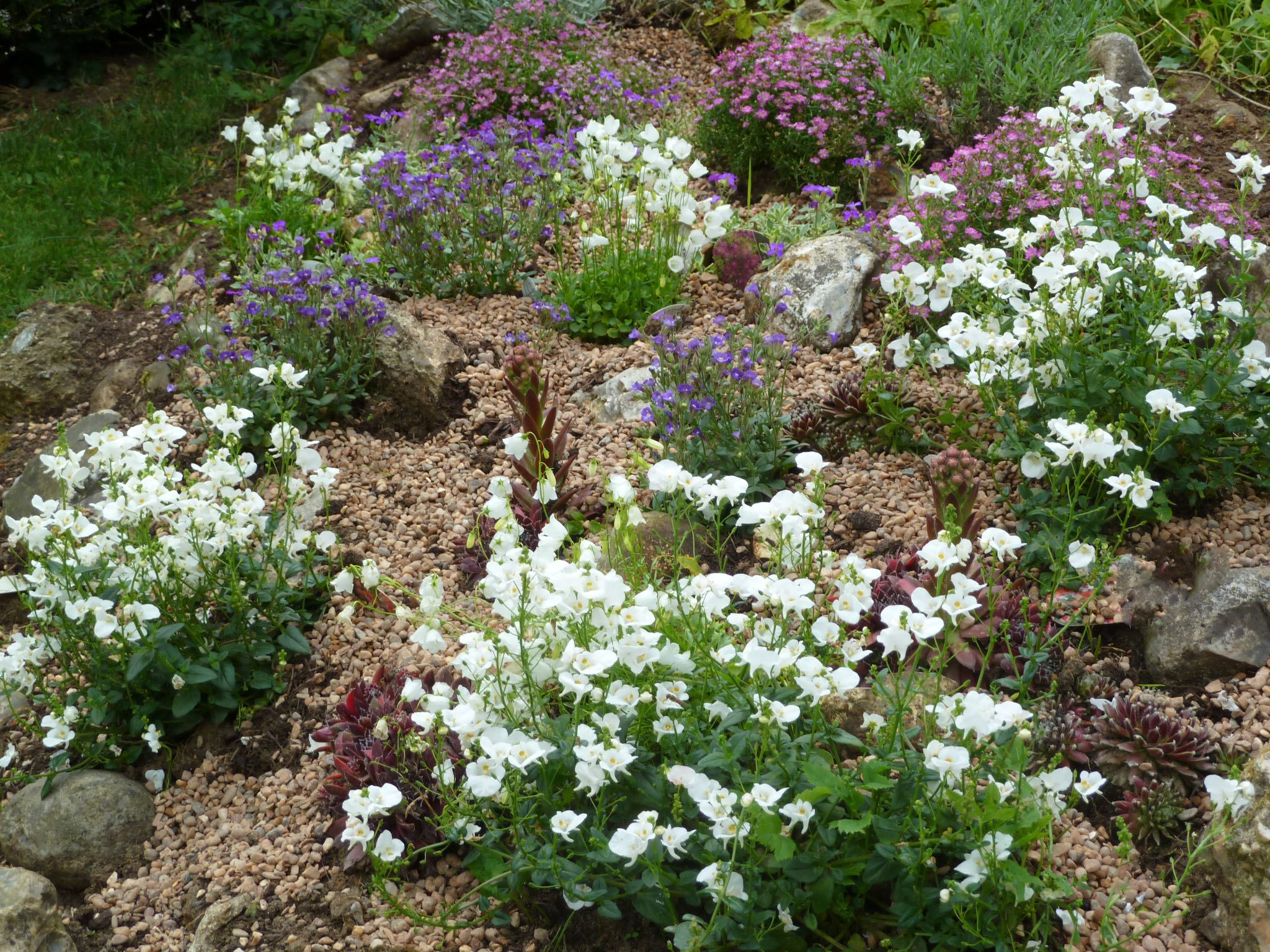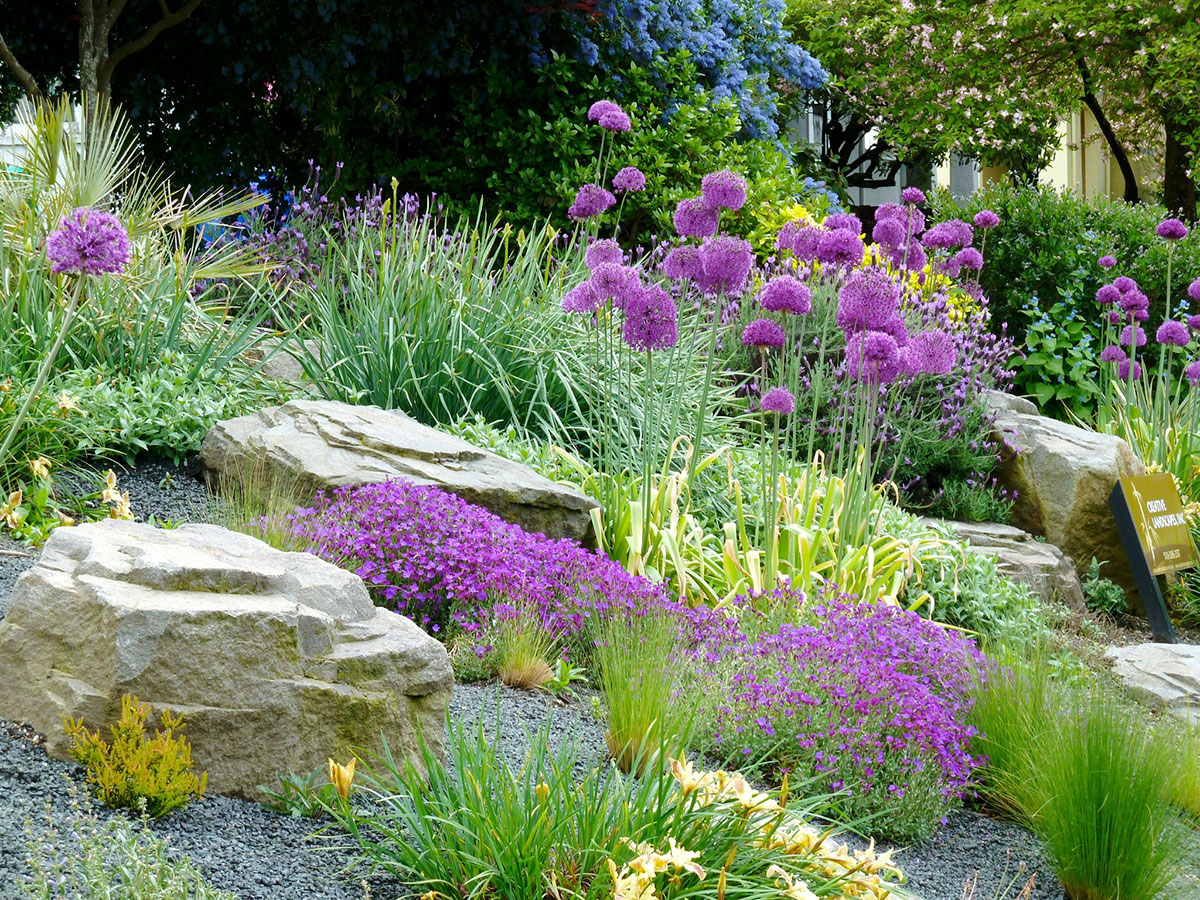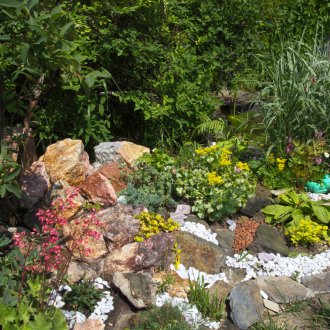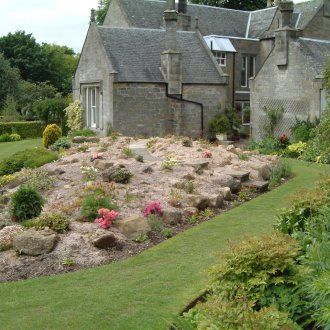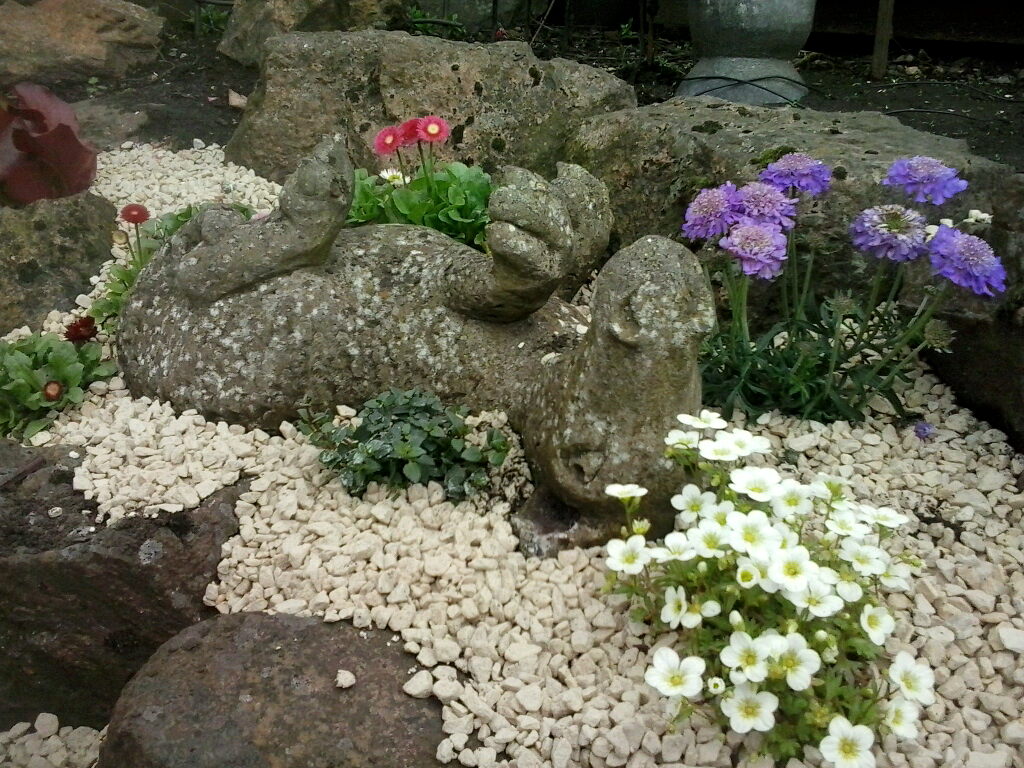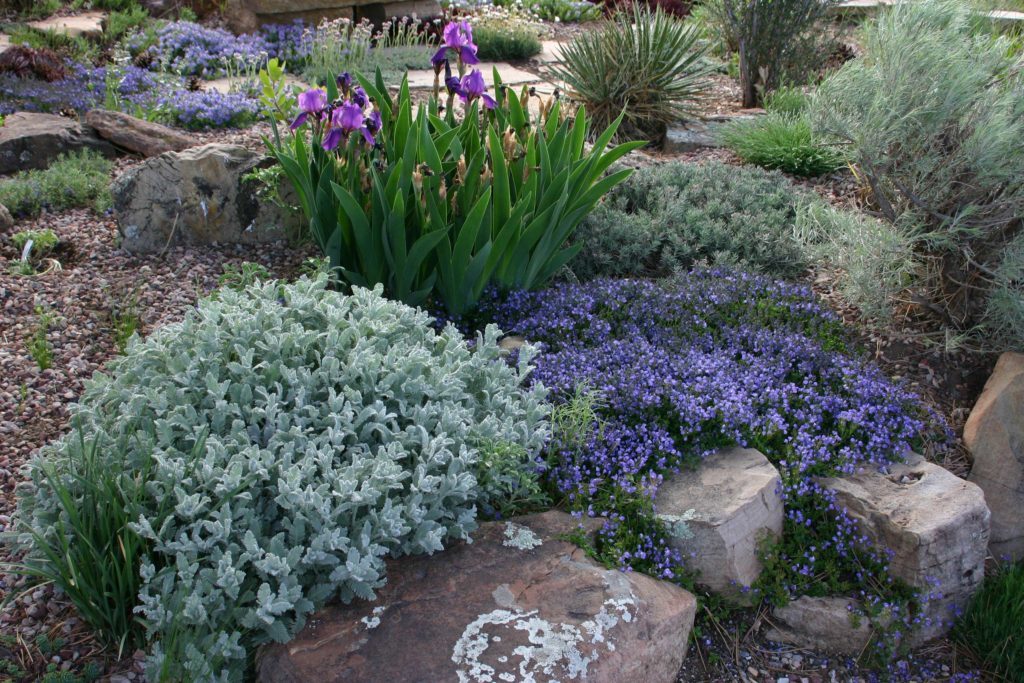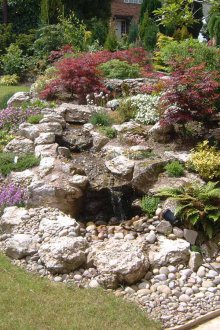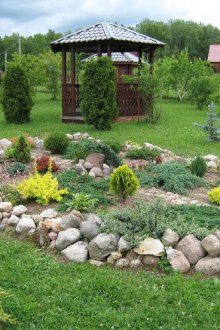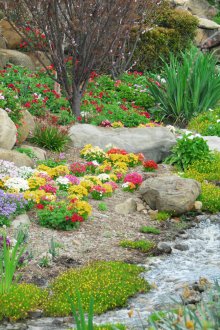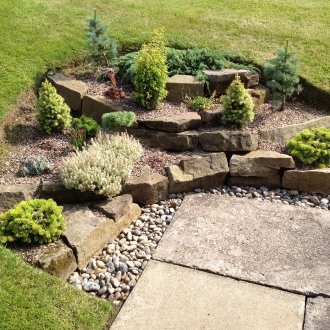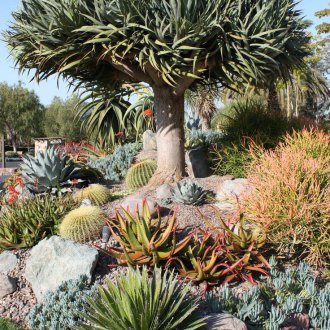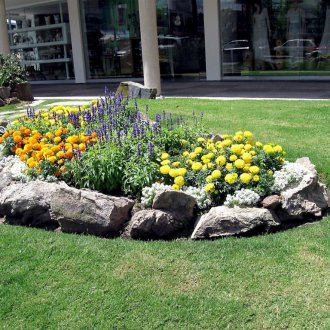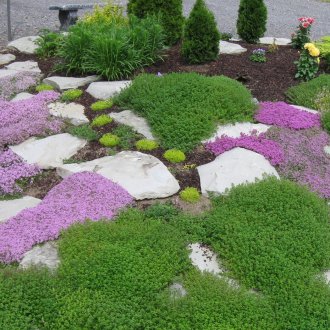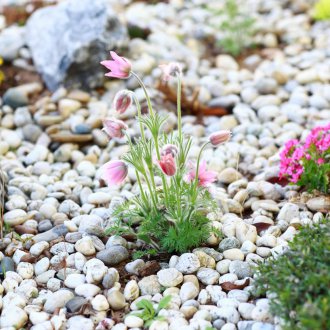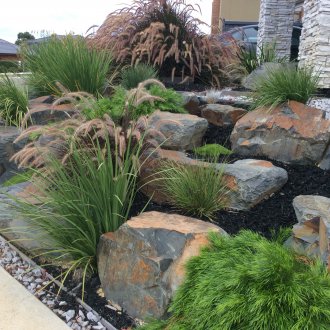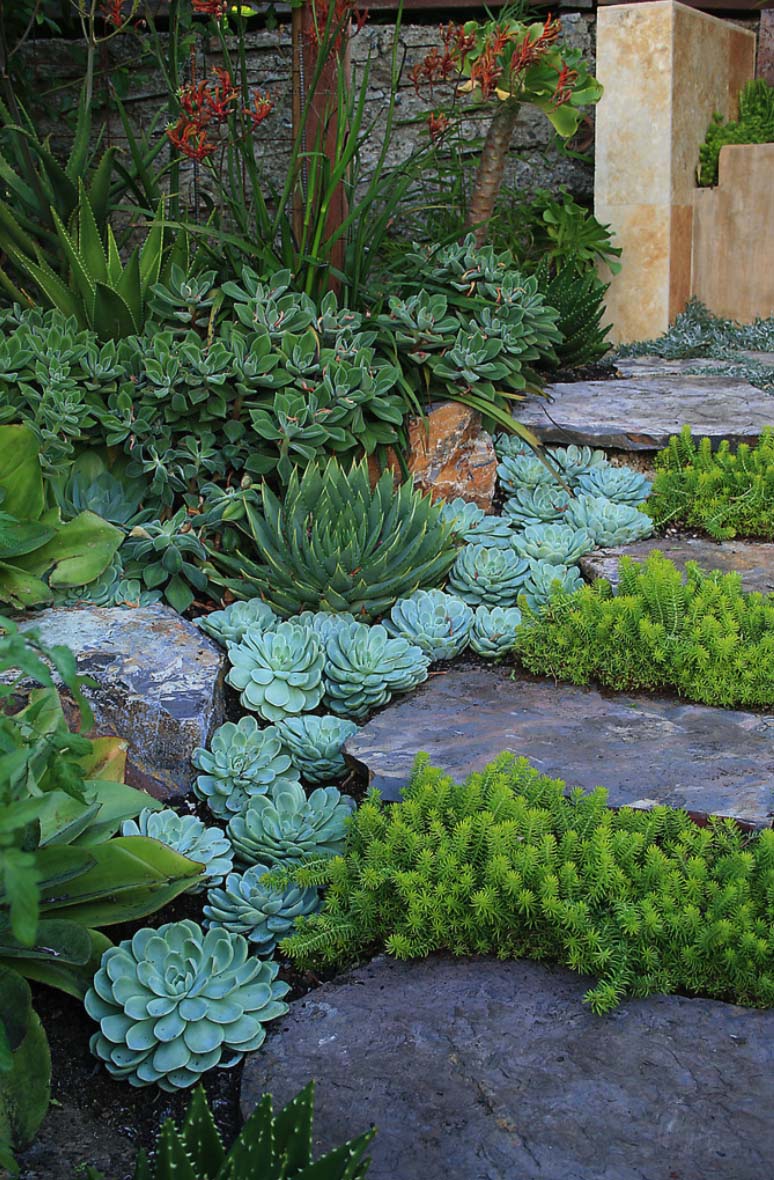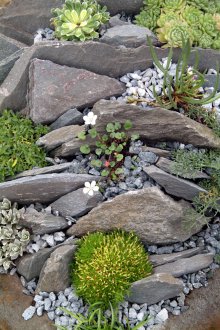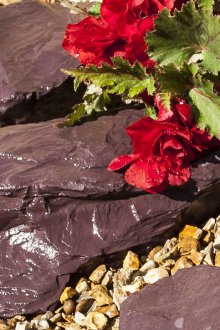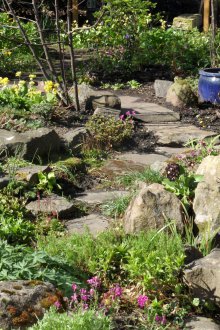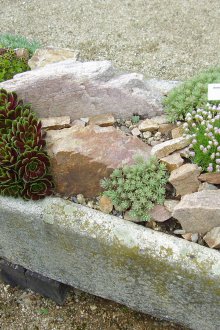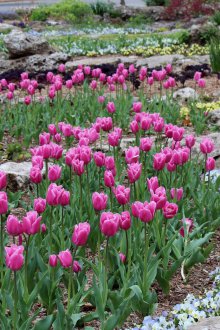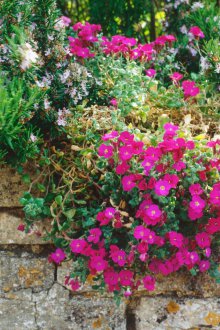Rockery - the refined beauty of a stone-flower garden (24 photos)
Content
Rockery (from the English word rock - stone, rock) - a composition of landscape design of a garden or a summer cottage created using stones and plants. The flat rockery is characterized by restrained beauty and perfectly decorates the corners of paths, recreation areas, and blind areas of the house.
Characteristic features of stone-plant composition:
- during design, tiers are not formed (there is no change in height), it is undesirable to dig large stones vertically;
- due to the flat form of the rockery, there is no need for its intense lighting;
- the use of stone elements of the same breed and similar shades is desirable;
- conifers of dwarf species are the basis of plant composition.
Stylistics of rockeries
Depending on the ratio of stones and plants, on the general appearance of the composition, several types of stone gardens can be distinguished.
- The English mood has a composition in which conifers prevail (juniper, thuja, spruce undersized). This style can be considered the most common in the art of creating rockeries.
- Japanese style is distinguished by the use of more stones. And this is not surprising, because Japanese stone gardens are a real art. To create such a miracle of landscape design on the site is possible for any owner.
- The European version is characterized by the use of plants of the middle strip (cotoneaster horizontal, viburnum ordinary low).
Types of Stone Flower Gardens
Depending on its location, the choice of plants, the simplicity of updating the composition, the following types of stone-flower garden can be distinguished:
- it is optimal to create a temporary rockery in the garden on a slightly elevated site, which is decorated with plants taking into account their further growth. Among the flowers, stones are installed that can be easily rearranged, added or removed;
- To create a permanent composition, select plants that grow slowly and are easily adjusted by cutting, if the summer resident wants to change the shape of the plants. Perennials are planted in groups, and species that do not give abundant root shoots are selected;
- variable - it differs in the selection of such plants, which, if desired, can be easily replaced. Such rockeries are suitable for summer residents who are fond of experiments with growing flowers. You can regularly update the floral component of the composition and avoid the monotonous design of the site. When creating a rockery, it is recommended to leave places in advance for the subsequent addition of vegetation. A great idea when designing a site is planting annual flowers, which in the case of an irregular result will simply be replaced (or even removed at any time).
Rockery composition
Depending on the layout of the rockery elements, its size, the structure can be conditionally divided into several types.
Volume rockery is being arranged on a plot of more than 10 sq.m. On large areas, several groups of stones (preferably three) look organically, rather than a single massif. The stone ensemble can be harmoniously combined with individual medium-sized stones.
The mini-rockery is formed on a compact territory, so the composition uses one large central stone. Large pebbles are also used to create a harmonious pattern. Plants are selected to the appropriate height.
Rockery in landscape design: design guidelines
When decorating the site, it is important to take into account all the nuances of creating the perfect stone-plant flower garden.
Preparation and selection of a place for arranging a decorative composition
Rockery is an important element of landscape design, therefore it is important that the composition not only successfully complements the site, but also is clearly visible from different angles and has an interesting look:
- in large areas, the place of registration of the rockery is chosen near the house or oriented to recreation areas, the park;
- the composition will organically complement the picturesque view of ponds or “dry streams”;
- mini-rockeries will miraculously decorate terraces or open areas, verandas;
- a rokary from conifers in front of the house with panoramic windows will provide a beautiful view at any time of the year;
- it is better to begin work on the construction of a stone-plant ensemble in spring or early summer.
During the preparatory work, you should carefully weed the ground, adding fertile soil if necessary. Its composition is selected taking into account the characteristics of future plantings, but avoiding excessively fertile additives so that the plants do not begin to grow wildly. The optimal mixture of soil: 1 part of the earth (leaf / turf), half of the peat, 1 part of sand and half of the "native" land. If water stagnates periodically within the future decorative structure, drainage is mandatory.
How to choose and set stones
The stage of placing the stones is the most important, as it sets the naturalness of the composition. So that the stones do not become an incomprehensible heap or a sad mound, you must adhere to some rules:
- Massive stones form the basis of the rocarius pattern and are installed first, therefore, maximum attention is paid to their arrangement. Bulky structures will look ridiculous on a small garden plot. The optimal number of boulders is 2-3 pieces;
- large stones should stand steadily; therefore, it is advisable to prepare the zone of their location beforehand: concrete should be concreted or covered with rubble. These measures will prevent boulders from sagging;
- small stones create the background of the picture, and larger specimens are laid out in accordance with the lines of the composition (creating a rounded form of the rockery or simply adhering to one direction). Only having decided on the locations of the main stones can they be dug up;
- To create an organic composition, stones of the same breed and texture are selected. For single-layer masonry, fragments of sandstone, granite, tuff or limestone are best suited. When choosing stones, their features must be taken into account: limestone, when interacting with the earth, exhibits an alkaline reaction, while sandstone, on the contrary, is capable of acidifying the earth. Porous tufa effectively decorates the composition, until weeds germinate in it, which is very problematic to remove, but it is necessary.
In order for the plants to stand out harmoniously against the stone background, boulders and pebbles choose muted natural shades: beige, yellowish, gray. Between the stones should be left enough space for free planting.
Plant selection and planting
When landscaping the site, it is recommended to adhere to some of the advice of landscape designers so that the plants do not look randomly planted with green bushes, but make up a beautiful composition:
- conifers form the basis of a stone-flower garden. It is worth choosing copies with a crown of the original form and an unusual shade of needles. They will create color accents on the site in the cold seasons. Western thuja with a conical or spherical shape (with yellow needles) will look picturesque, a dark-coniferous dwarf - a mountain pine, an ordinary spruce of a nest-shaped form;
- Further, the free spaces between the stones are filled with decorative deciduous shrubs. Perfectly decorate the composition is the crown marsh (forms a dense ball of elegant green), Kuril tea (covered with yellow flowers from mid-summer to the first frost), Japanese spirea (with bright golden-orange foliage). Creeping forms of shrubs look great as a green filler;
- Bright seasonal accents can be created with bulb or small bulb crops. Freshness of spring - crocuses and snowdrops is perfectly emphasized. Later primroses, the most beautiful low tulips, bloom. So that the rock always has an elegant and festive look, plants that bloom at different times are selected;
- various perennial flowers for the rockery will adorn the stone garden. Moreover, when choosing varieties, its location is necessarily taken into account - shady or brightly lit;
- when landscaping a site, it is possible to use many flower arrangement schemes. Do not get carried away with the number of plants, as a riot of colors or an ill-conceived combination can destroy the harmony of the rockery in the country.
Create a picturesque rockery is available with the help of many species and varieties of plants. The only limitation is that plant growth should not exceed 30-40 cm, otherwise it will be difficult to formulate an integral composition.
Also, the choice of plants is determined by the size and shape of the rockery. The compact area is elegantly ennobled by plants of small forms: miniature barberry, cinquefoil, Japanese spirea, horizontal cotoneaster. In areas with significant areas, you can plant more tall plants: spruce, cypress. It is necessary to use them in the composition thoughtfully, since the flat form of the rockery nevertheless provides for the predominance of low plants.
So that the boundaries of the rocky area “dissolve” in the landscape, ground cover perennials are planted along the edges of the rockery.
How to make a rockery
It’s better to start mastering the skill of creating stone gardens with arranging the composition on a sunny territory. This will simplify the selection of plants. Do-it-yourself rockery in the country is recommended to be created in a small area - an area of about 10 square meters. m. It is advisable to entrust the design of larger compositions to a professional.
- At the initial stage, you need to determine the style, pattern and area of the rockery, its location.
- Marking outlines the contours of the decorative section. A layer of earth about 30 cm thick is carefully removed and weeds removed from it. Geotextiles are placed in the recess to prevent weed germination. A small layer of brick chips or gravel is poured to create drainage.
- The gravel layer is covered with sand and soil previously dug. The earth is compacted and left to shrink for a couple of months.
- The central place of the composition is formed - large boulders are laid out and pressed into the ground.
- The free surface is covered with a layer of special soil (its main qualities are moisture resistance and vapor permeability).
- Plants are planted. The earth around flowers and large stones is covered with pebbles or decorative gravel.
Rockery can unconventionally ennoble any garden plot. Natural stones blend beautifully and naturally with plants. Such a composition can be considered an excellent technique for creating a natural flower garden on a flat ground.
